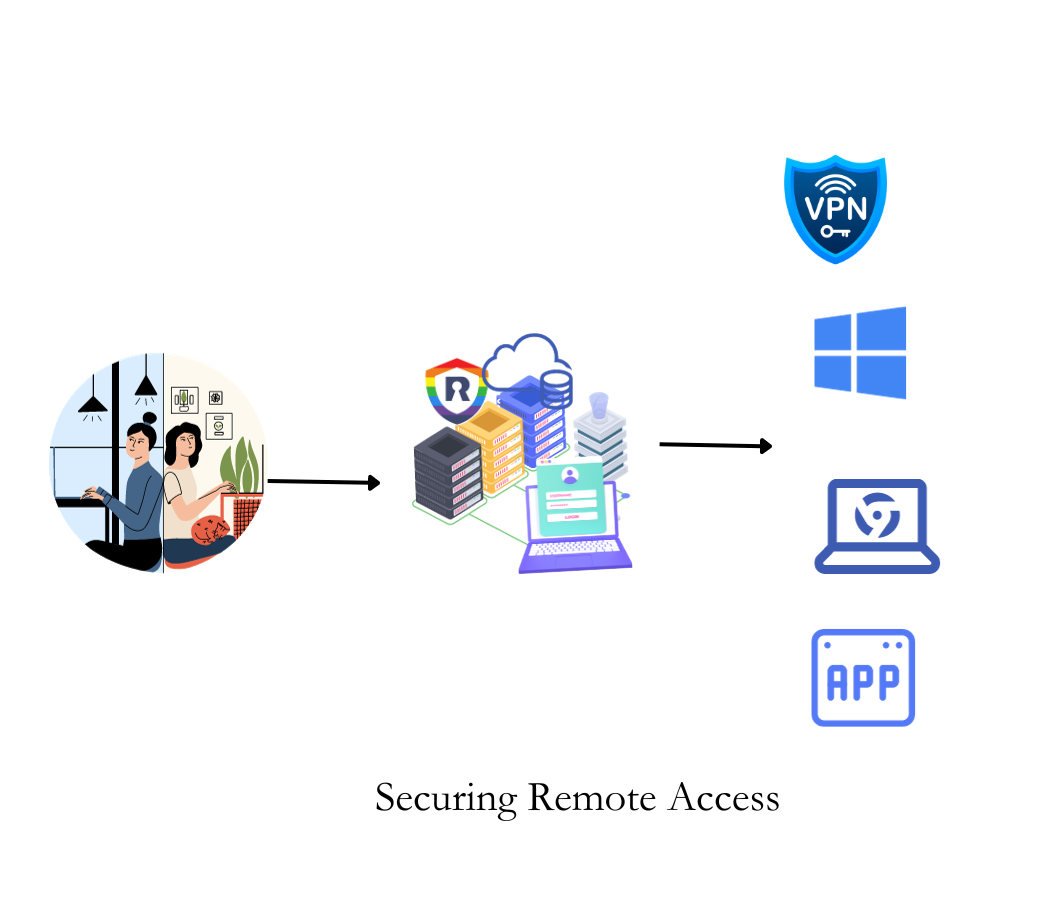Free Remote IoT Access: SSH Explained & How To Get Started!
Can you imagine a world where your Raspberry Pi, nestled on your desk or tucked away in a remote location, is always at your fingertips, ready to respond to your commands from across the globe? This is not a futuristic fantasy; it's a tangible reality, and it hinges on the power of Secure Shell (SSH) and the expanding landscape of free remote IoT platforms.
The ability to remotely access and control Internet of Things (IoT) devices has become increasingly vital in today's interconnected world. Whether for personal projects, professional development, or industrial applications, the capacity to monitor, manage, and manipulate devices from a distance offers unparalleled flexibility and efficiency. This article delves into the core components and practical implementations that facilitate this remote access, specifically focusing on free solutions utilizing SSH and platforms like RemoteIoT.
At the heart of this remote accessibility lies SSH, a cryptographic network protocol designed to ensure secure communication between your local machine and remote IoT devices. SSH provides a secure channel for data transmission, encrypting all communications to protect sensitive information from unauthorized access. This is paramount in safeguarding your devices and data from potential threats. The widespread adoption of SSH is a testament to its reliability and robust security features, which make it a cornerstone in the realm of remote device management.
Understanding the nuances of SSH is crucial for anyone seeking to leverage it for remote IoT access. It operates on a client-server model, where the client initiates a connection to the server (the IoT device). Once a connection is established, all data exchanged between the client and server is encrypted, providing a shield against eavesdropping and tampering. SSH also offers various authentication methods, including password-based authentication and SSH key-based authentication. While password authentication is a straightforward method, it is generally less secure. SSH key-based authentication is strongly recommended as it provides a more secure means of verifying the user's identity.
Remote IoT monitoring is another crucial aspect to consider. It allows you to keep a constant eye on your IoT devices, ensuring they function as intended and providing immediate insight into any potential issues. With remote monitoring, you essentially have a pair of eyes and hands in multiple locations at once, offering proactive management capabilities. This is particularly useful in situations where physical access to the devices is limited or impractical.
The combination of SSH and remote monitoring opens up a wealth of possibilities for IoT projects. Users can remotely access the command line of their Raspberry Pi devices, execute commands, transfer files, and troubleshoot issues without being physically present. This capability is extremely valuable for tasks such as software updates, system configuration, and data retrieval. Moreover, it also enables the creation of automated systems and remote control applications, where users can interact with their devices from a user-friendly interface.
Several free solutions have emerged to streamline and enhance the process of remote IoT access using SSH. Platforms such as RemoteIoT offer user-friendly interfaces and robust security features, simplifying the process for both hobbyists and professionals. These platforms typically provide a straightforward means of establishing secure connections to your devices without incurring any costs. The availability of such free solutions has democratized remote IoT access, making it more accessible than ever before.
One of the key benefits of these platforms is the ability to manage and control your devices from anywhere in the world. This can be a real game-changer for many scenarios:
- Hobbyists: Easily access and manage your Raspberry Pi projects from anywhere, whether you're at home, work, or on vacation.
- Professionals: Monitor and control industrial IoT devices, streamline troubleshooting, and reduce on-site visits.
- Educators: Demonstrate IoT concepts remotely, and provide hands-on experience to students without physical constraints.
The RemoteIoT platform, for example, allows users to manage their devices by offering a free download option. This underscores the commitment of developers to make remote IoT access a simple experience. The platform simplifies the process of device management, and ensures secure and efficient connectivity with a high level of ease.
RemoteIoT utilizes the SSH protocol. SSH is used to establish secure, encrypted connections with IoT devices from remote locations. This technology is designed to ensure data integrity and confidentiality during transmission. Remote IoT offers a secure and efficient way to access and control IoT devices from anywhere in the world.
For those new to the concept, setting up SSH access may seem daunting, but in reality, it's a fairly straightforward process. On a Raspberry Pi, for instance, the process involves enabling SSH in the Raspberry Pi configuration, setting up appropriate firewall rules, and configuring either password-based or key-based authentication. It's crucial to follow best practices for security during this setup. This includes using strong passwords or, preferably, SSH keys; disabling root login; and regularly updating the system software to patch any security vulnerabilities.
Another viable option is a web-based SSH client like WebSSH. WebSSH is a free and simple web application that allows users to connect to their SSH servers. With a web-based approach, you can access your devices directly through a web browser from virtually any device with internet access, making it a versatile solution for remote management. WebSSH eliminates the need for any local client installations. This makes it accessible on almost any device, with no credentials or other plain text information is shared with our servers, and supports SSH password authentication.
For those not familiar with setting up an SSH host, there are guides to help with linux, windows 10 \/ server (1803+), or macos ssh host. Alternatively, you can also create a vm on azure.
For improved security, you can enable remote.ssh. For improved security you can also set up the remote server listen on socket in VS code user settings.
Beyond the core concepts, it's important to remember that remote access for IoT devices opens up the potential for vulnerabilities. Iot devices offer automation, efficiency, and convenience, but leaving them unmonitored can open up avenues of vulnerability. That's why strong security practices are paramount, including using SSH keys and the need to disable root login in order to prevent unauthorized access.
The world of remote IoT access is constantly evolving, with new tools and platforms emerging to simplify and improve the experience. Platforms such as SocketXP are cloud-based IoT device management and remote access platforms which can be used to remotely manage, access and monitor IoT devices, raspberry pi fleet or any linux machines behind NAT router and firewall.
In order to start, you'd be able to easily signup a new account, which takes about a minute and is completely free, before connecting your raspberry pi, open up remoteiot website in your browser.
For those seeking advanced management capabilities, Mremoteng adds bug fixes and new features to mremote and allows you to view all of your remote connections in a simple yet powerful tabbed interface.
Other clients can also be used to connect to your devices such as Putty, which uses SSH protocol to provide authentication and file transfer utility, supporting both SSH1 and SSH2 for secure remote.
When exploring the landscape of free remote IoT SSH solutions, it's also worth considering the different SSH clients available. For Linux users, there are several popular options, each offering a unique set of features and capabilities. Some of these clients include OpenSSH (which is often pre-installed), PuTTY, and others.
Choosing the right client depends on individual preferences, technical needs, and the specific requirements of your IoT project. The core functionality remains consistent across these clients: the ability to establish a secure, encrypted connection to a remote device and manage it from a distance. Many support both password and key-based authentication, allowing you to prioritize security based on your specific requirements. They also support features like port forwarding, which can be helpful for accessing internal services on the remote device.
The security offered by SSH, is a cryptographic network protocol, that ensures secure communication between your local machine and remote IoT devices, protecting sensitive data from unauthorized access. SSH is widely used for establishing secure SSH, telnet, and sftp connections to remote servers. In business settings, iot remote access is key to maintaining operational continuity, enabling remote troubleshooting, and optimizing resource allocation.
For those using Windows, Bitvise SSH client is free to use, and Bitvise SSH server is an SSH, SFTP and SCP server for windows. The Bitvise SSH server is robust, easy to install, easy to use, and works well with a variety of SSH clients, including bitvise ssh client, openssh, and putty. The SSH server is developed and supported professionally.



Detail Author:
- Name : Ernest Ebert II
- Email : west.dasia@erdman.com
- Birthdate : 1977-02-27
- Address : 6055 Danial Ways Suite 097 New Esteban, MI 95897
- Phone : +1-754-533-0218
- Company : Leannon-O'Conner
- Job : Crossing Guard
- Bio : Aspernatur facilis reprehenderit et eveniet voluptas iste. Nisi iusto enim sapiente nostrum itaque et eligendi.
